Engaged in the clothing industry for 20 years.

SPFW SS24 or fashion as a reflection of contemporary issues
The 55th Edition of SPFW – São Paulo Fashion Week – took place from May
25 to May 28, at three different locations in Brazil. On May 22,
designer João Pimenta held the pre-opening of the show, presenting a
commemorative collection of his 20 years of work, in a parade at the Teatro
Municipal de São Paulo, in downtown São Paulo. Altogether there were 31
live shows and 10 fashion films.
The diversity of models, already consolidated since the last edition,
was extended to the regional diversity of brands, bringing newcomers from
different parts of the country. There were new brands from Ceará state in
the north east (Marina Bitu and David Lee), from Bahia state, also located
in the north east(Gefferson Vila Nova) and from the city of Rio de Janeiro
(The Paradise), as well as the São Paulo-based Forca Studio.
The event, as a whole, seeks to strengthen fashion as a platform for
social causes, such as inclusion and diversity. It is worth remembering
that the creative accelerator Cria Costura, presented an exhibition at
event venue Komplexo Tempo, with pieces produced in the third edition of
the program, held in Brasilândia and Cidade Tiradentes. The program,
created by INMODE- National Institute of Fashion, Design and Creative
Economy, and by the Municipal Secretariat of Economic Development and
Labor, identifies and promotes talents, transforming technical sewing
skills into value-added skills.
On the catwalks of this edition, the public saw a reflection of the
trends presented during the previous season – laminated materials, glitter,
comfortable modelling, plus vibrant shades, much more used now, forming a
rainbow palette, which alludes to LGBTQIA+ issues. Brown and its
sub-tonalities came to stay, providing an earthy and cosy atmosphere. It
was a kind of continuation of the catwalk presentations during the FW23
edition and the issues previously raised, showing that fashion reflects and
allows us to discuss social and political concerns and questions.

Santa Resistência, photo: Zé Takahashi/Agência Fotosite

The Paradise, photo: Marcelo Soubhia/Agência Fotosite
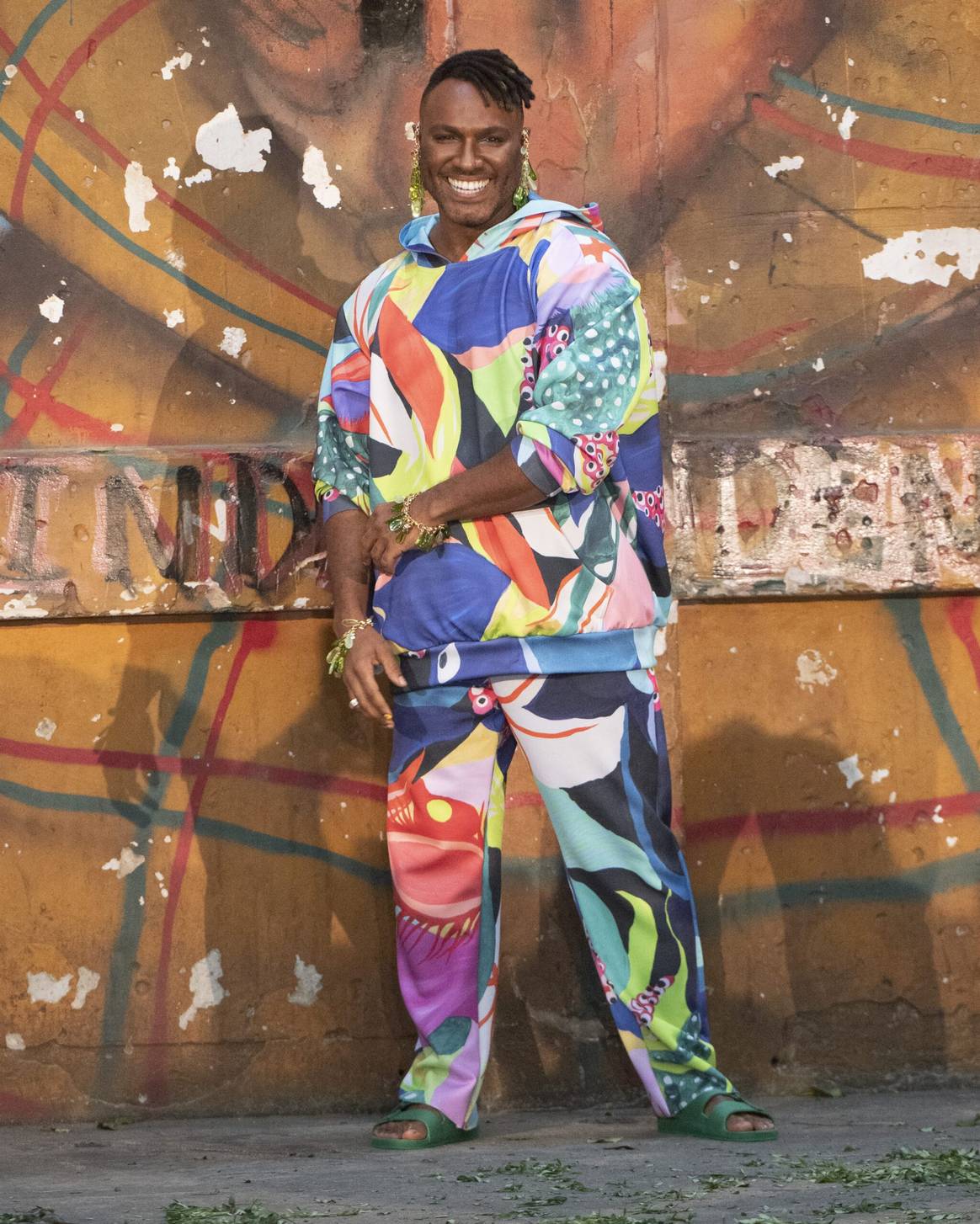
Isaac Silva, photo: Marcelo Soubhia/Agência Fotosite
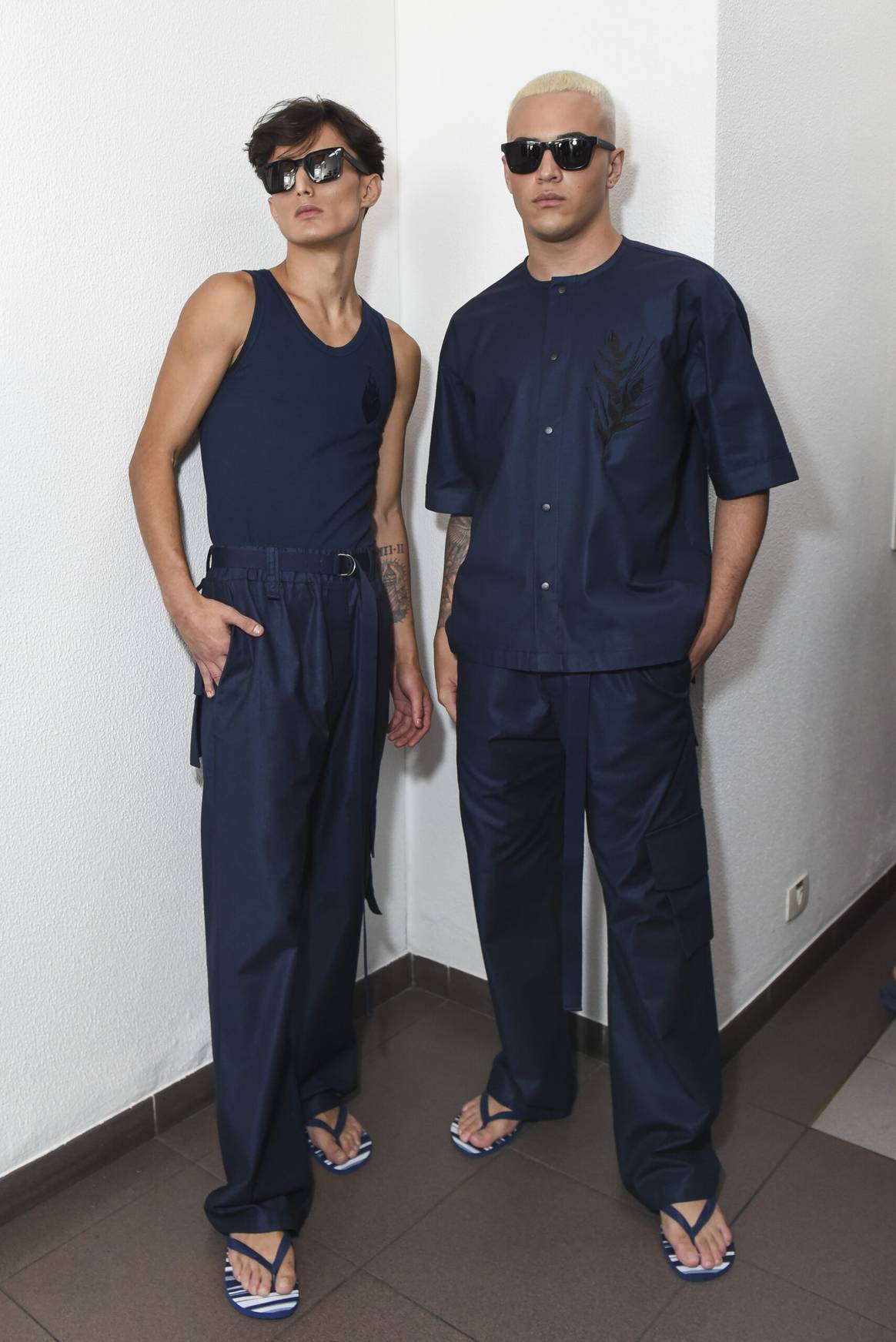
Gefferson Vila Nova, photo: Gabriel Cappelletti

Dendezeiro, photo: Marcelo Soubhia/Agência Fotosite
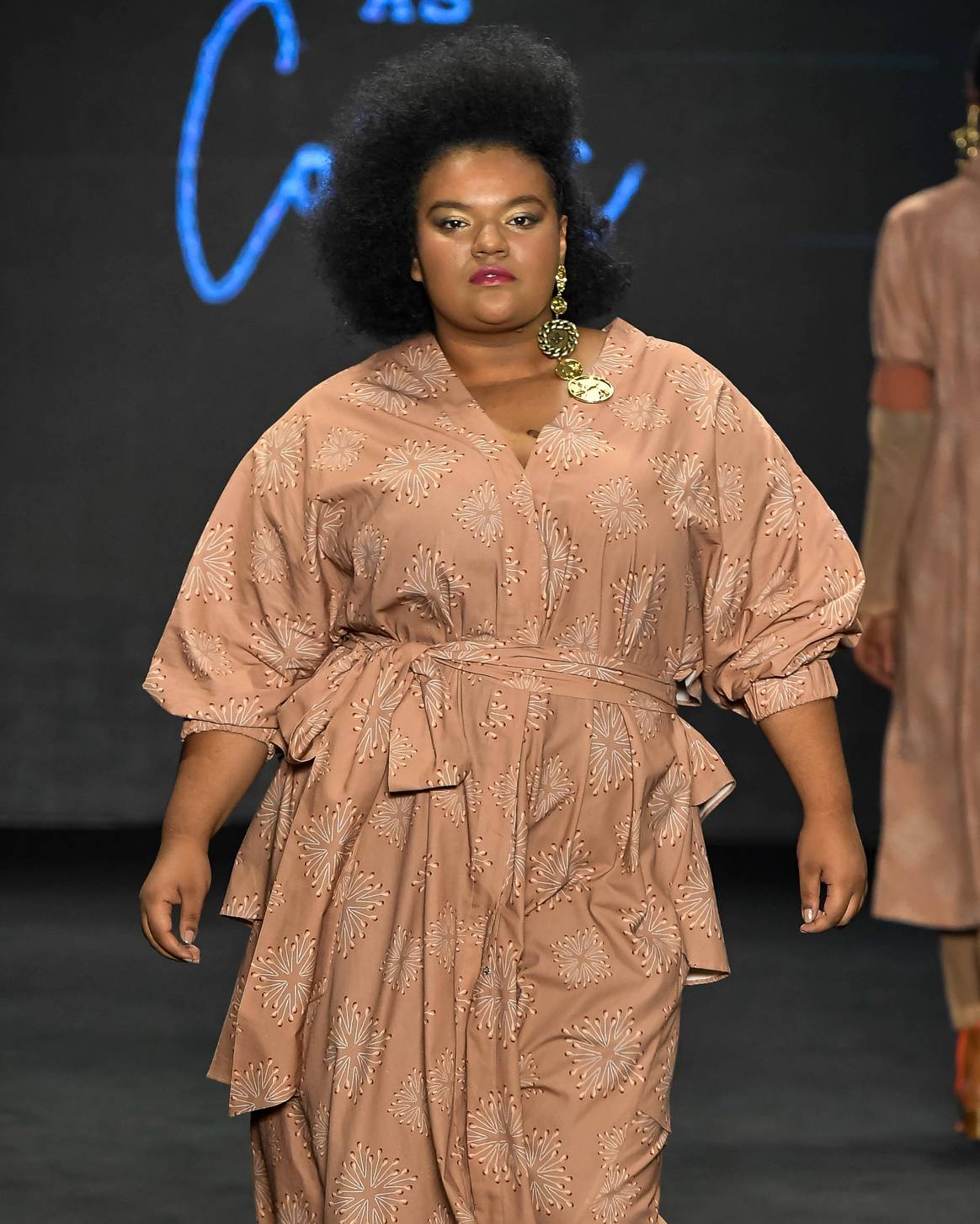
Thear, photo: Zé Takahashi/Agência Fotosite

Igor Dadona, photo: Marcelo Soubhia/Agência Fotosite
Colours and prints
Vibrant colours disrupted the monotony of neutral black and white, which
appeared on practically all the catwalks. Bright red emerged imposing at
Santa Resistencia and multicoloured prints brought life to the catwalk at
Meninos Rei, The Paradise and Isaac Silva. At Igor Dadona there was a
plethora of flowers in round shapes. Almost all brands presented some
monochrome looks, such as Gefferson Vila Nova. The earthy tones outlined
Dendezeiro’s pieces and unfolded in Thear’s beige.
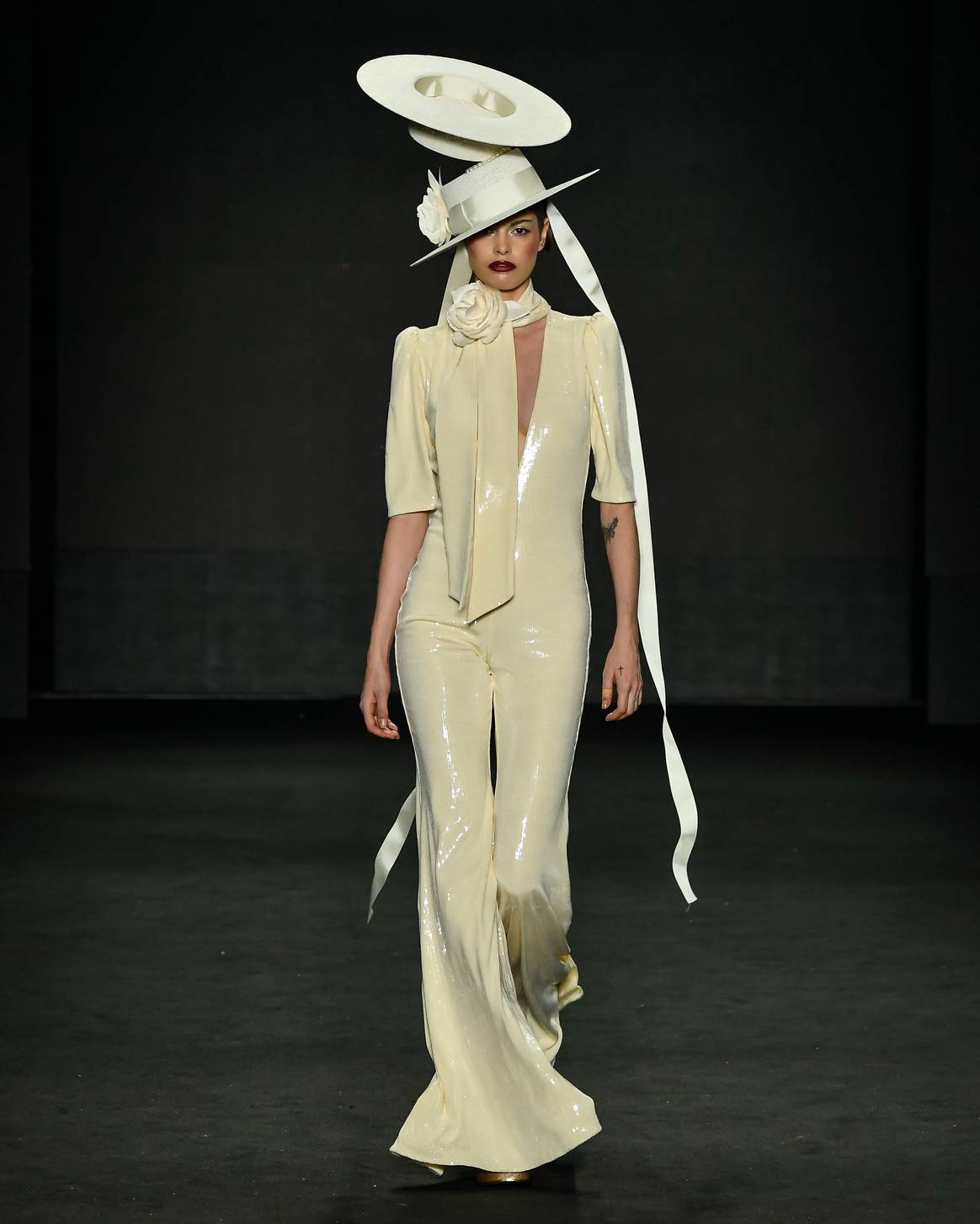
Walério Araújo, photo: Zé Takahashi/Agência Fotosite
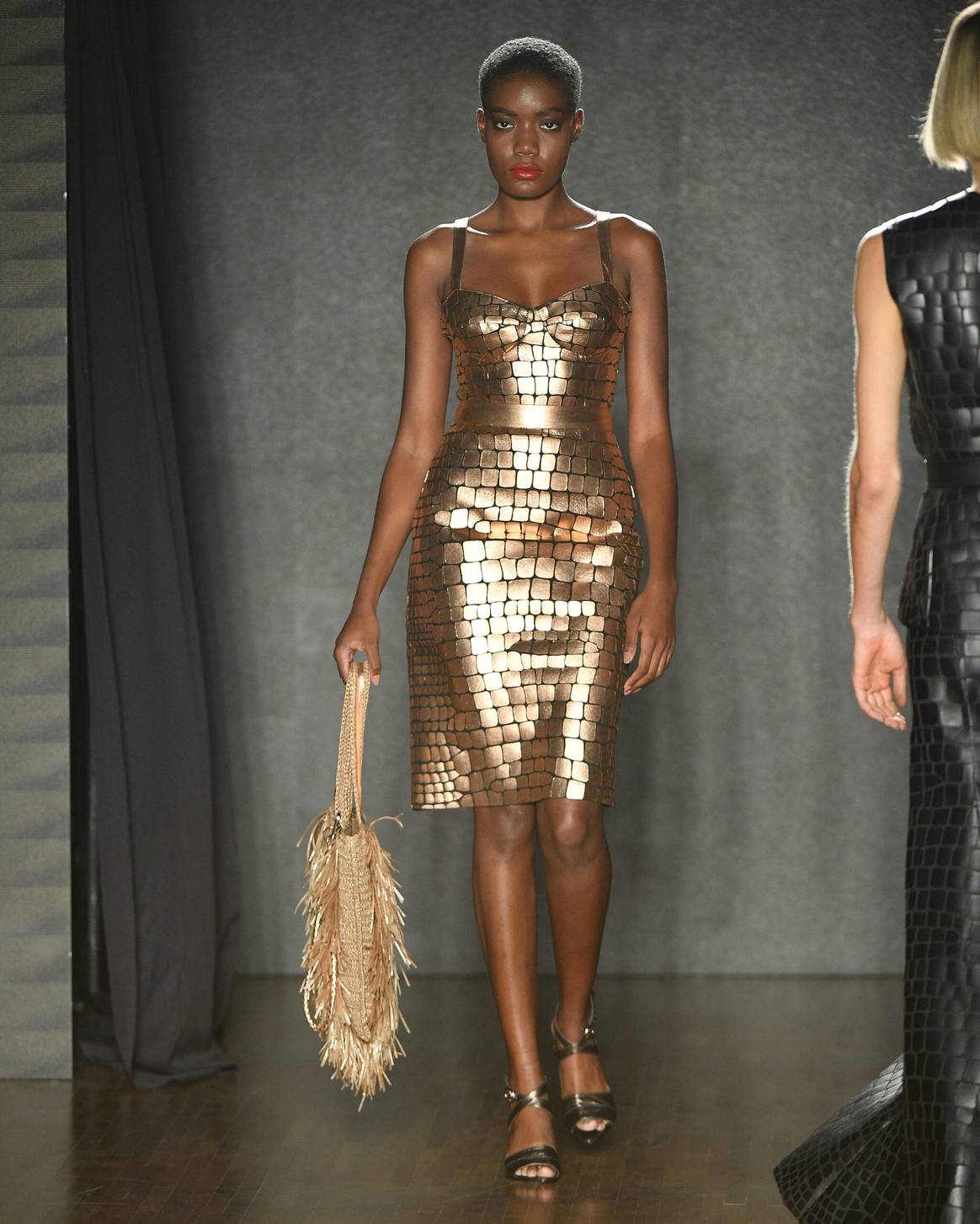
Patricia Viera, photo: Marcelo Soubhia/Agência Fotosite

Apartamento 03, photo: Zé Takahashi/Agência Fotosite
Glitter and laminated materials
Reinforcing the designs presented during the previous season, sparkles
and laminated materials remain firmly present in the SPFW collections.
Designer Walério Araújo, who paid tribute to former Brazilian model and
presenter Elke Maravilha, used glitter in various ways: from subtle pastel
sequins to vibrant purple looks. In addition, we saw laminated leather,
which Patricia Viera worked as if in patchwork on canvas. Apartamento 03
presented laminated leather in pleated jackets and skirts. The fringes of
João Pimenta, in tubes provided a discreet brightness, as well as the
embroidery on lace.
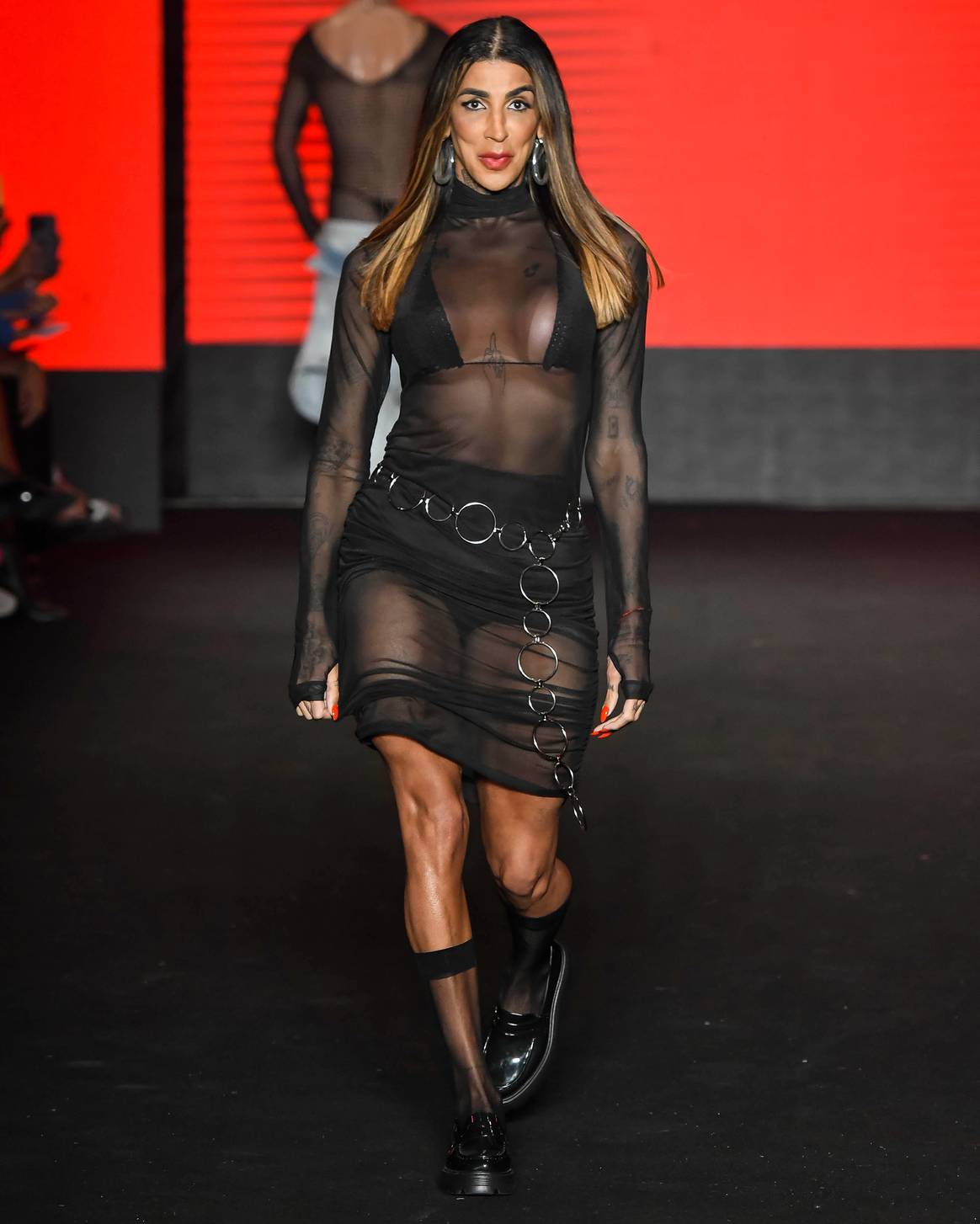
LED, photo: Zé Takahashi/Agência Fotosite

João Pimenta, photo: Marcelo Soubhia/Agência
Fotosite

Minisis, photo: Zé Takahashi/Agência Fotosite
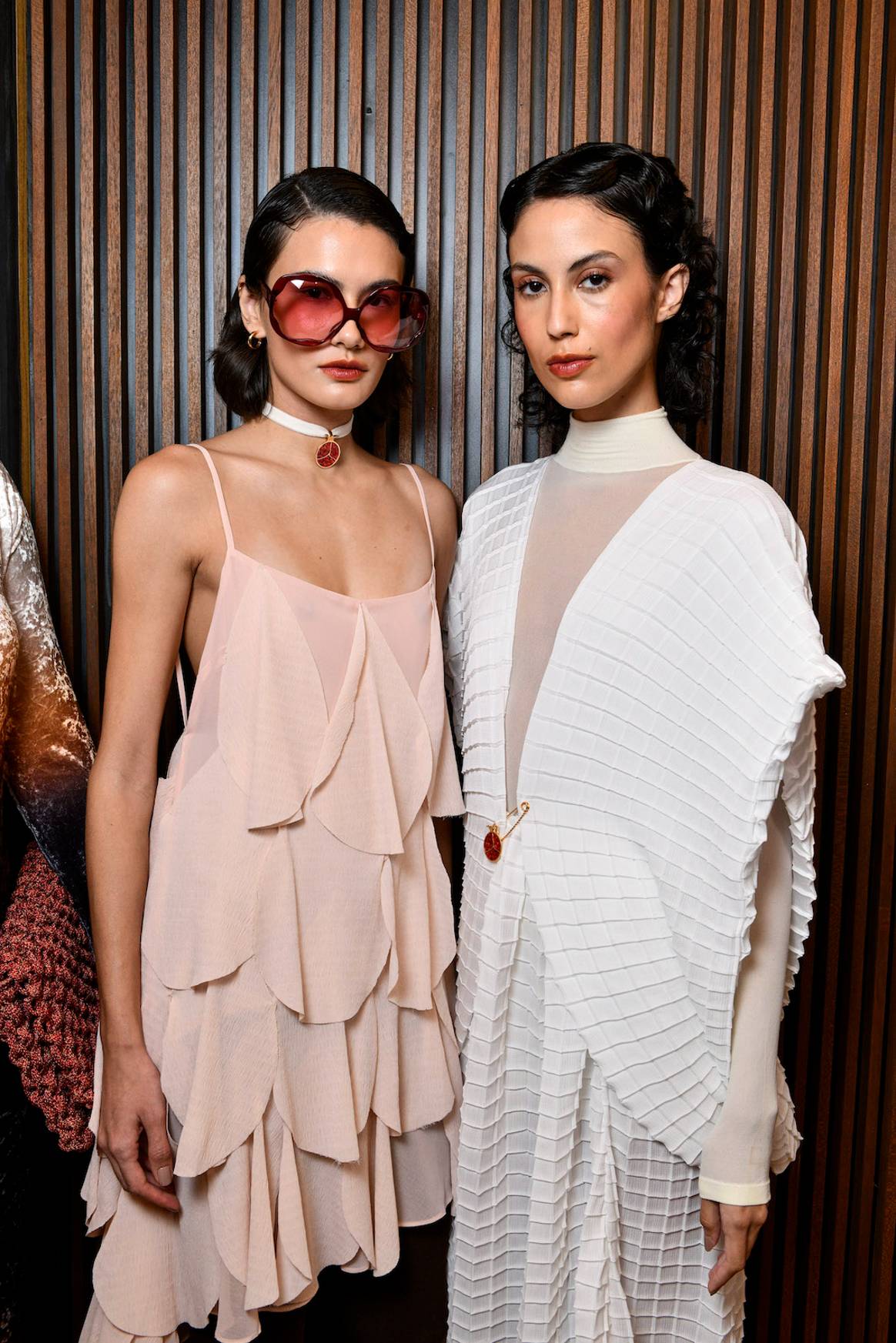
Marina Bitu, photo: Gustavo Scatena/Agência Fotosite
Transparencies and frills
Transparencies appeared in a more subtle way at Fernanda Yamamoto, and
in other more explicit ways at LED. João Pimenta dared to bring the
transparency of embroidered white lace to male territory. The frills came
in various forms, both horizontal and vertical. They were present at
Minisis and Marina Bitu, as well as other brands.
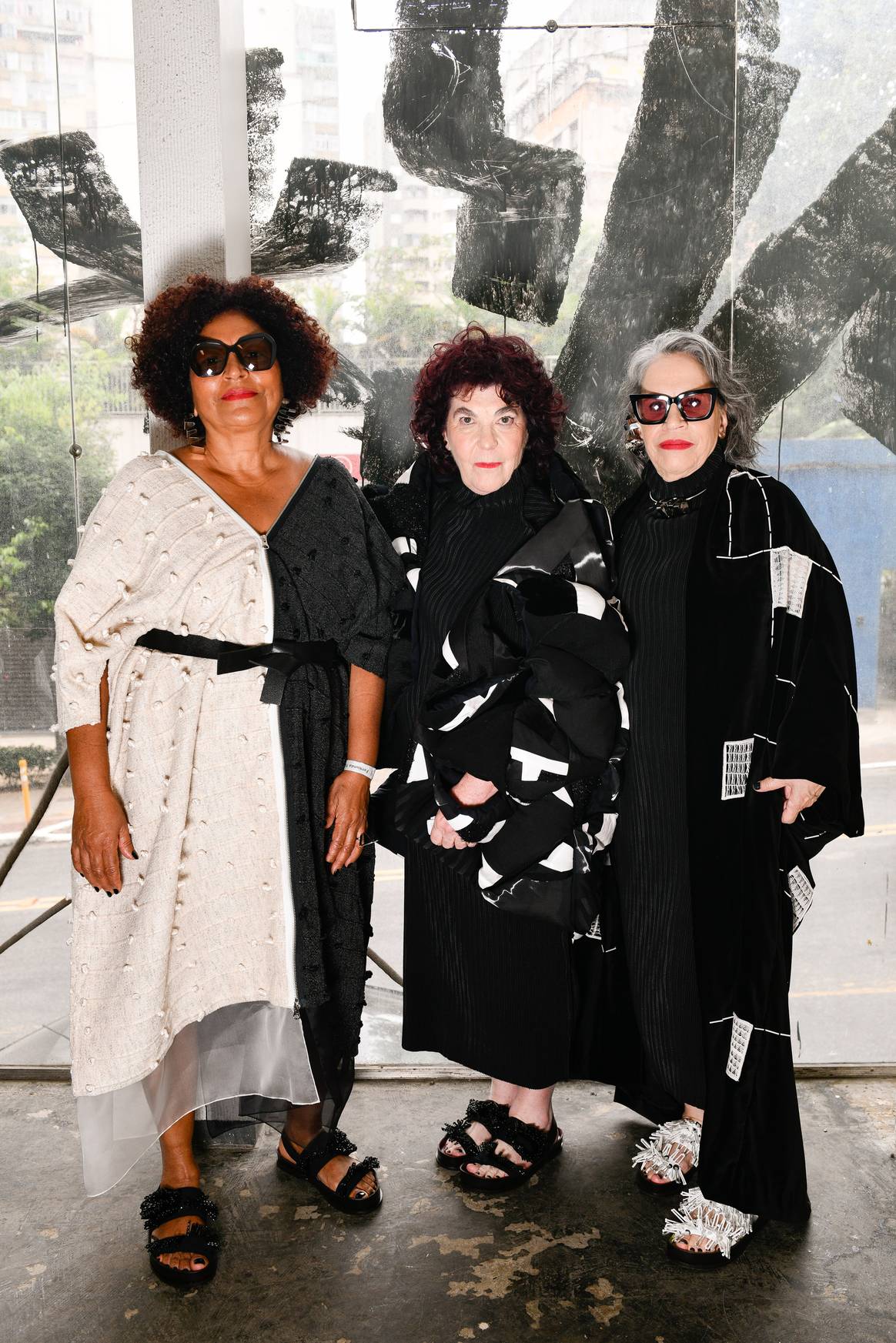
Fernanda Yamamoto, photo: Gustavo Scatena/Agência Fotosite

Foz, photo Felipe Russo
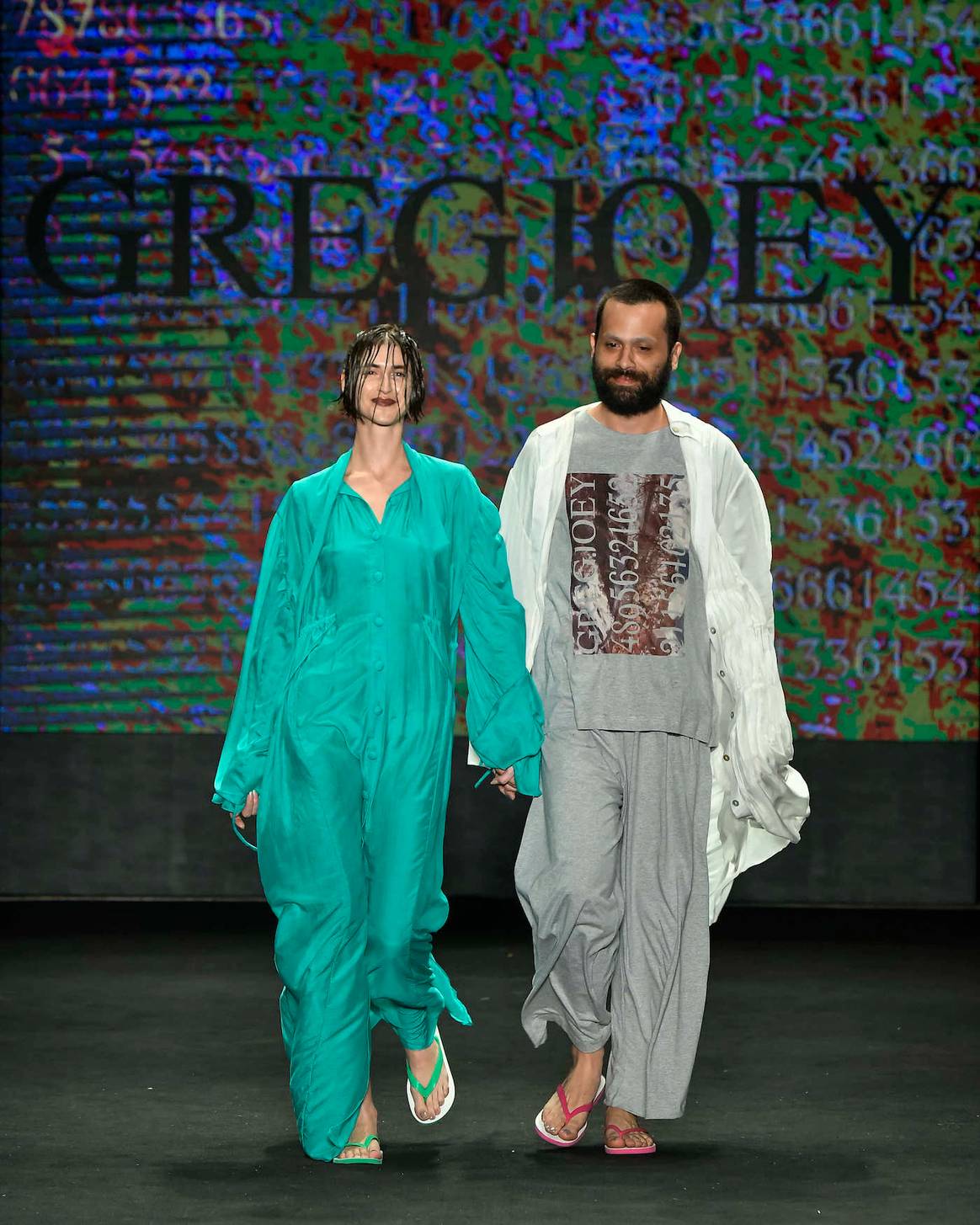
Greg Joey, photo: Zé Takahashi/Agência Fotosite
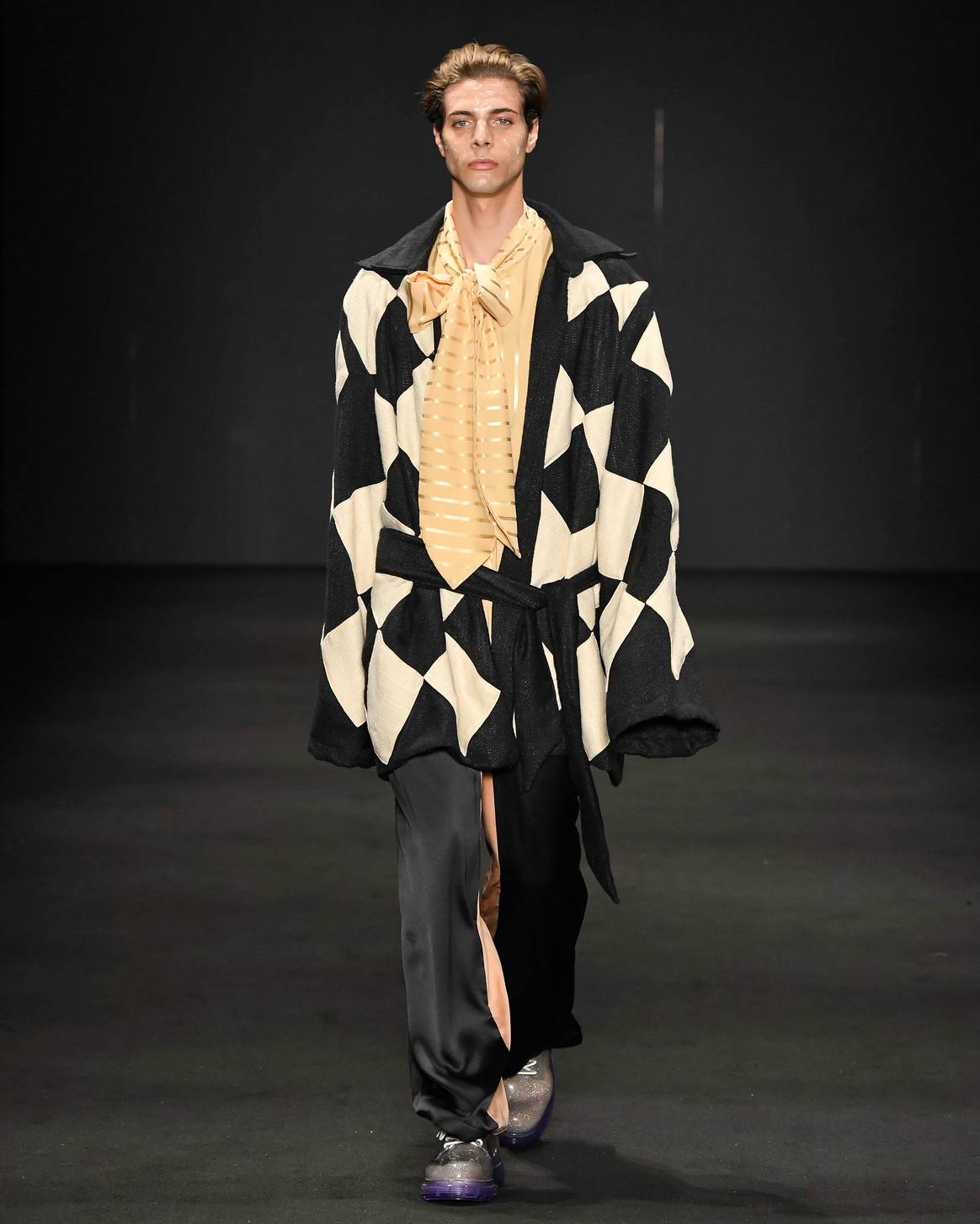
Rafael Caetano, photo: Zé Takahashi/Agência Fotosite

Forca Studio, photo: Zé Takahashi/Agência Fotosite
Comfortable modelling and broad lines
Even in a more luxurious way, as exemplified at Fernanda Yamamoto,
comfort appears in various guises. At the newcomer Foz, it occurs with a
basic look of trousers and blouse, or even in the wide range of dresses. At
Greg Joey, both male and female, in overalls and trousers and shirt. Rafael
Caetano created the comfort through light fabrics and loose modelling.
Forca Studio in the t-shirt, shorts and tailored trousers.
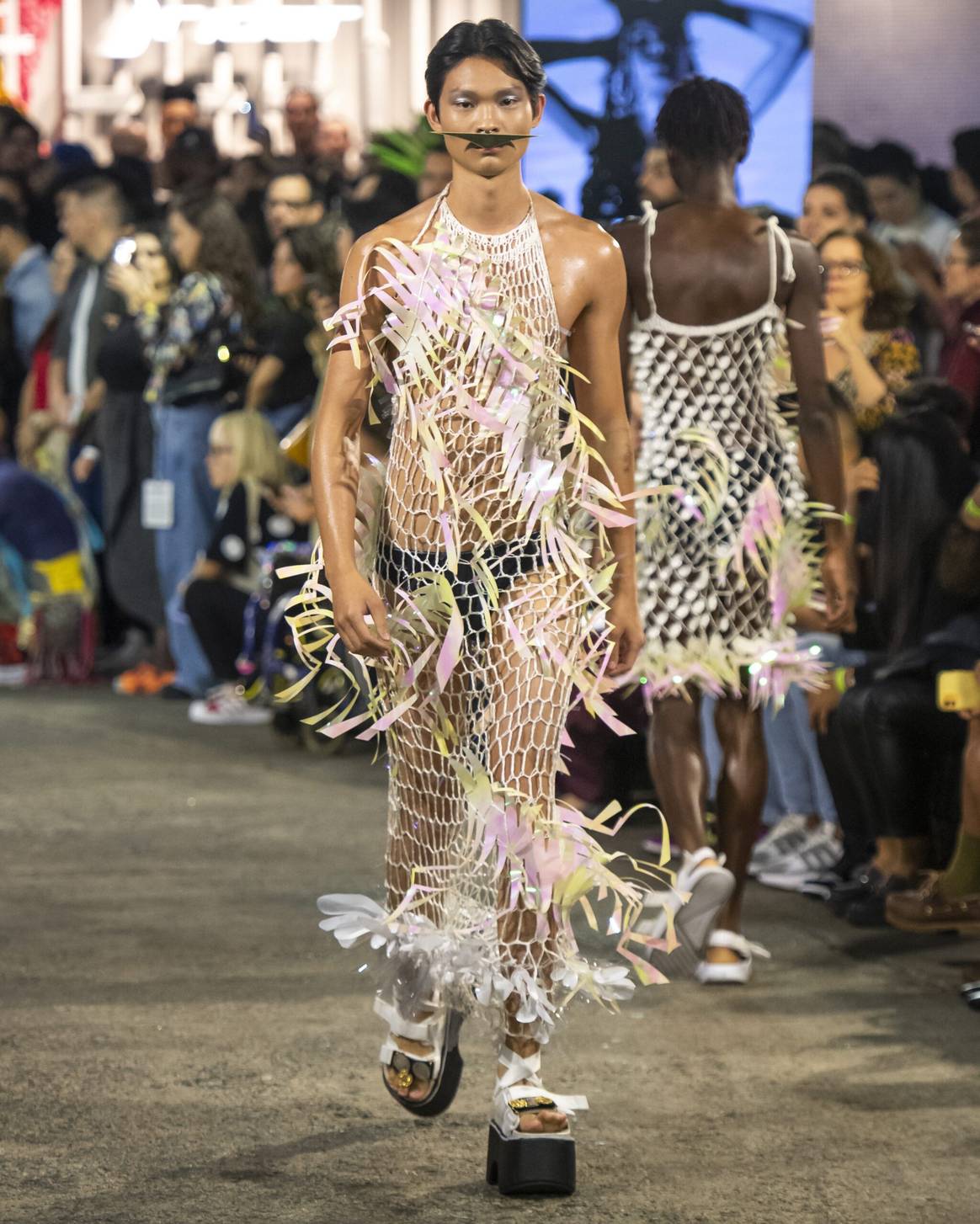
Ponto Firme, photo: Marcelo Soubhia/Agência Fotosite

David Lee, photo: Marcelo Soubhia/Agência Fotosite

Weider Silverio, photo: Zé Takahashi/Agência Fotosite
The value of handmade
Handmade crafts are still in high demand, in a constant upward trend.
Ponto Firme brought a whole collection in crochet, now with the addition
of technological materials, more sophisticated. Another designer that used
crochet in an elegant way, in the form of a total look, was the newcomer
David Lee. Fuxico, the ancient art of using fabric cut-outs, was used
beautifully by Weider Silverio. And even in the skirt mentioned above, by
Dendezeiro, we can see evidence of handcrafted work.